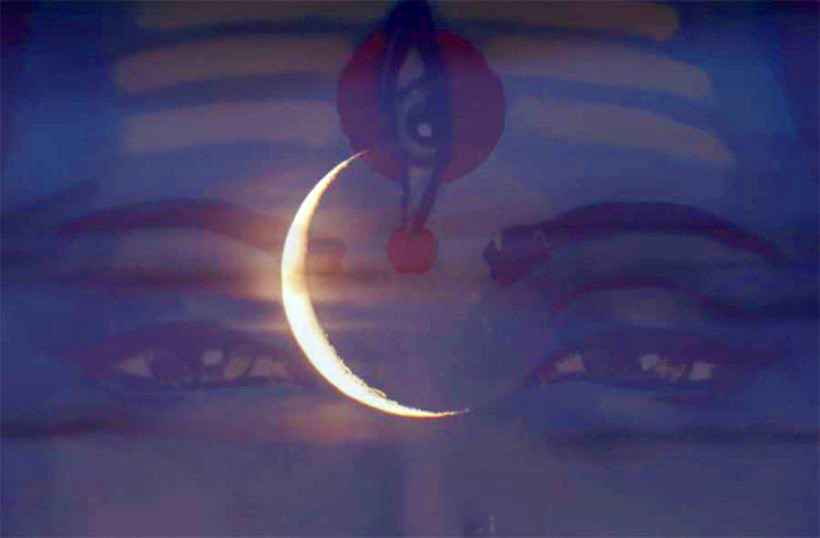
by Somya Devi | Mar 11, 2021 | Astrology, Conjunctions, Holy Days
New Moon and Maha Shivaratri, March 2021
The Sun and Moon join near the end of sidereal Aquarius on the dark night of March 12th, with an exact alignment under the New Moon at 5:21 am ET on Saturday, March 13th. Mercury and Venus also join the Moon and Sun in Aquarius, while Saturn (with Jupiter in sidereal Capricorn) once again rules over 6 grahas at the time of the New Moon. Mars and Rahu continue their conjunction in sidereal Taurus, opposite Ketu in Sagittarius, forming a Kala Sarpa Yoga in the sky. Thursday night, the fourteenth night of the waning Moon, marks the Maha Shivaratri celebration this month. Sun and Moon begin this cycle in the Vedic nakshatra Purva Bhadrapada, an auspicious sign for spiritual advancement.
Aquarius Cycle
With the new lunar cycle beginning in Aquarius, the coming month may have a quirky and forward-thinking tone, and we may see some scientific advances this month. The Mars Rover landing actually occurred just days after the Sun had entered its Aquarius cycle. Aquarius is in fact very much about service to the greater good. With Saturn strong in his own sign, we could see many significant advances in social support structures right now.
Aquarius is known as Kumbha in Sanskrit, a word for “pitcher” or “vessel.” According to the Vedic texts, the sign Kumbha can be imagined as a man holding a pot, with deep-brown skin, standing in the water. We can see this Aquarian imagery in the sadhus of India (and its biggest ritual pilgrimage day, the Kumbha Mela), who make their lives an offering of service to society through their prayers and Saturnian austerities, while renouncing the individual self. In the Aquarius cycle, we think about how we can serve the whole.
Maha Shivaratri
Thursday night, March 11th in North America, the night prior to the Dark Moon night, is the fourteenth waning phase of the lunar cycle. During this month this night is celebrated as Maha Shivaratri. This is the most auspicious night of the year for doing sadhana (spiritual practice). It is traditional on this night to stay up all night fasting, chanting, praying, and meditating. This holiday honors Lord Shiva, the great ascetic, as we recall two stories of great sacrifices that he made protect the entire creation.
One of these is the story of the gods and demons churning of the milk ocean in order to release the nectar of immortality. Before the nectar came up, however, a poison came up first. (This is similar to when we do spiritual practice and begin our path of self-inquiry, and negative tendencies often come to light first, which can be a painful experience. Similarly, during a physical fast or cleanse, toxins can be shaken loose and released first, causing a healing crisis before we continue healing into a freer, happier state of being.) When the poison came up from the milk ocean, Lord Shiva consumed it so that it would not engulf humanity, as a great and noble sacrifice. His wife, Parvati, however, held his throat so that he could not ingest it, thus saving him from being harmed by the poison.
Maha Shivaratri also commemorates the wedding of Shiva and Parvati, which also stemmed from great sacrifice made for the benefit of all humanity. It was said that after his first wife, Sati, perished, Shiva was fully devoted only to his sadhana, meditating for aeons in isolation and renouncing the world. Then the demon Tarakasura began running amock on earth, threatening all of humanity. Brahma foretold that only Shiva’s child could defeat Tarakasura, so the gods devised a plan for Sati to reincarnate as Parvati, and win over her Lord to marriage once again to produce this heir. Shiva was not easily swayed, however, and it was only after Parvati became an ascetic and underwent great penance that he agreed to marry. They eventually produced their son Kartikkeya, who went on to slay the demon.
Thus, this holiday is celebrated through the penance of fasting, forgoing food, water, and sleep, for one night, and simultaneously celebrating the union of Lord Shiva and Parvati, or the masculine and feminine energies of creation, that allows the dance of life to continue. It is an apt time to feel the forces of Aquarius upon us, which compel us to consider our role in society, and in the universe, and what personal sacrifices we can make for the greater good. Even if you’re not able to stay up the whole night, any amount of devotional practice, serviceful sacrifice, or chanting of Om Namah Shivaya on this night can have beneficial affects that are magnified greater than on any other night.

Kala Sarpa Yoga
This year’s Kala Sarpa yoga cycles continue, as Rahu and Ketu appear to cut the sky in half with all planets to one side of the nodal axis. Kala Sarpa can be translated as “black snake” or the “serpent of time,” and intensifies subtle forces on all levels, including inner challenges as well as strengths and yogic combinations in a chart. Mars joins Rahu in Taurus, and tho he will transit out of Taurus and into Gemini in one month, technically breaking the cycle, the intensity brought on by the alignment can sometimes continue when only one planet has crossed to the other side of the sky.
Purva Bhadrapada
The former “lucky-footed one” is the Vedic nakshatra (star-sign) where Sun and Moon begin this lunar cycle. This nakshatra bridges Aquarius and Pisces and is often represented by a funeral cot, symbolizing the transition from life into death, or ultimate liberation. It is ruled by Aja Epakada, the one-footed goat who is often associated with the image of Lord Shiva as Nataraj dancing on one foot, a fitting image for Maha Shivaratri.
Om Namah Shivaya!
Personal Chart Readings with Coaching Are Available Here
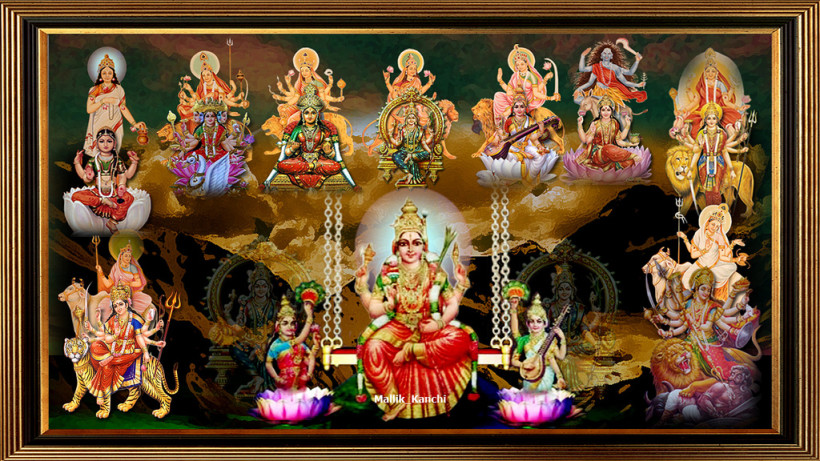
by Somya Devi | Oct 12, 2015 | Astrology, Holy Days
For the first nine days and nights of the waxing Moon this lunar cycle we celebrate Navaratri (starting October 13th in North America). Literally the “nine nights,” this is a Hindu festival dedicated to worshipping the Goddess, Devi, in her many forms, for nine days and nights. There are nine forms of Durga that are typically celebrated each day. We celebrate the power of Shakti, the sacred dynamic feminine principle of divine energy. We pray to her to help reveal and remove our shortcomings, bestow blessings, and confer wealth and knowledge. Navaratri worship can include many forms of puja (ritual prayer). These can include creating a special altar to the Goddess, and making daily offerings including flowers, food, incense, light (a flame), ghee, as well as prayer, meditation, mantras and bhajans (devotional songs). The Devi Mahatmyam (a.k.a. Chandi Path), the story of Durga, is a traditional text to read throughout this festival. Occurring in the fall-time in India and the northern hemisphere, this Navaratri also coincides with the harvest season, and is a time to give thanks for the abundance of the harvest and pray that it carries us through the winter season.
Goddess is worshipped over the nine nights in the form of nine incarnations of Durga (Navadurga). These are Shailputri, Brahmacharini, Chandraghanta, Kushmanda, Skandamata, Katyayani, Kalaratri, Mahagauri and Siddhidatri. Below are the stories of these goddesses, how to worship them, what they represent, as well as what colors and planets are associated with the nine days of Navaratri.
In many places, worship is dedicated to Goddess as Durga, Lakshmi and Sarasvati, for three nights each. Durga helps us to destroy and remove negative tendencies in our minds and hearts, cleansing them of impurities that create obstructions in our spiritual and material pursuits. Lakshmi helps us to cultivate positive qualities, like compassion and devotion. She helps us to achieve spiritual and material prosperity. Sarasvati assists us with learning and attaining knowledge and wisdom, through the illumination of consciousness. She relates to prana, the vital breath, often associated with chi or life-force. Through our devotion, service, practice, study, and meditation, we allow prana to flow freely and enter a state of peace, bliss, and oneness. The tenth day of Navaratri is known as Vijayadashami, the day of victory, and is a time for auspicious beginnings after emerging from these nine days of worship and union with the Goddess.
May your connection to the Divine Mother and Shakti within deepen and blossom during this time. Jai Ma!
First Day of Navaratri: Goddess as Shailputri
Tuesday, October 13th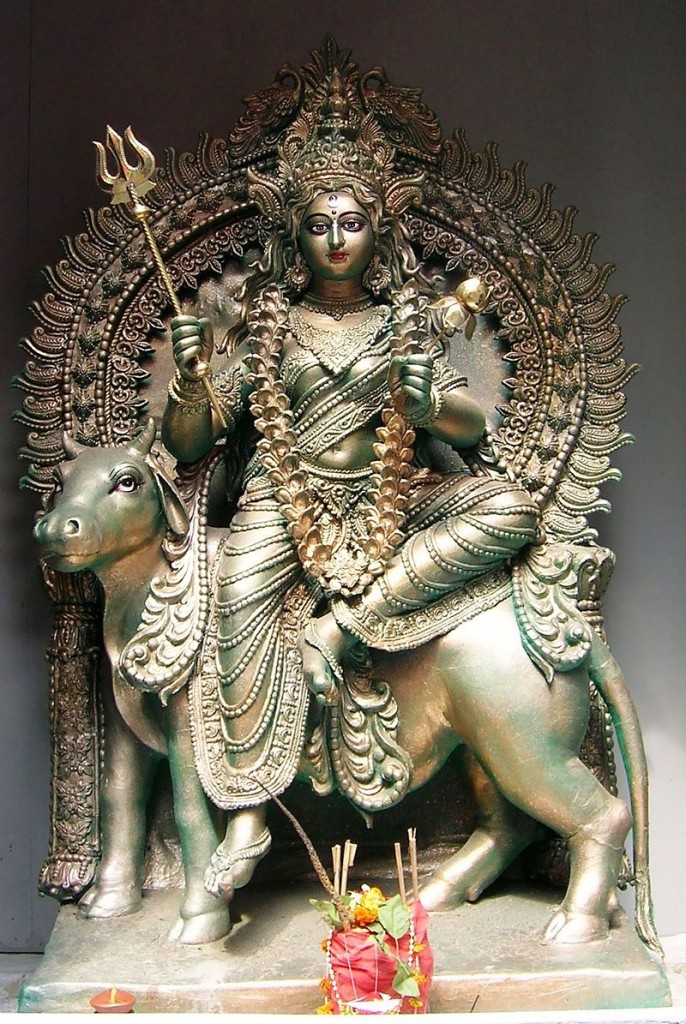
On the first day of Navaratri, On the first day of Navaratri, we honor Goddess in the form of Shailputri (a form of Durga), the “daughter of the mountains.” In the story of Shiva and Shakti, Shiva’s wife first incarnated as Sati, but Sati ended up sacrificing herself in a ceremonial fire because of her father’s (Daksha’s) disapproval of her husband. It was foretold that she would be born again to a father who respected the divine ascetic, and thus she reincarnated as Parvati, also called Hemavati (the daughter of Himavat, personification of the Himalayan mountains), or Shailputri (literally “daughter of the mountain”).
Shailputri rides a bull, Nandi, and carries a trident and a lotus in her hands. She rules the Moon (Chandra) and wears a crescent Moon on her forehead, just like her consort, Shiva. She is the mother of Kartikeya and Ganesha, and thus represents creative energy. She relates to the muladhara (root chakra), where we begin the journey of awakening the divine energy within, in the process of letting it rise into union with divine consciousness. It is good to concentrate on the root chakra today. Shailputri is a fitting goddess to worship for initiations and auspicious beginnings, and for the first day of Navaratri, as we are beginning the process of awakening Shakti. Devi’s color is red, which can be worn on all the nights of Navaratri, especially tonight.
Second Day of Navaratri: Goddess as Brahmacharini
Wednesday, October 14th
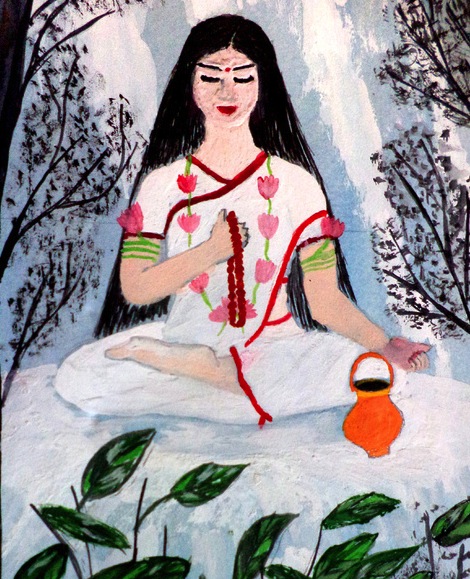 On the second day of Navaratri we worship Goddess as Brahmacharini, she who practices penance. Another form of Parvati and Durga, Brahmacharini is the form of the goddess who endured tapas or austerities (penance) to win the heart of Lord Shiva (representative of sublime consciousness). As he was an ascetic dedicated to austere meditations in solitude, the high-born Parvati forsook her father’s wealthy abode and chose the sadhu life of self-discipline and renunciation in order to attain spiritual growth. She went to live in the forest, enduring the elements, forgoing food and water, and meditating for eons. Brahmacharini is depicted in bare feet, holding a japa mala (prayer beads), and a kamandal (a simple water-pot, often carried by sadhus), and wearing rudrakshas (the bead related to Shiva and renunciation).
On the second day of Navaratri we worship Goddess as Brahmacharini, she who practices penance. Another form of Parvati and Durga, Brahmacharini is the form of the goddess who endured tapas or austerities (penance) to win the heart of Lord Shiva (representative of sublime consciousness). As he was an ascetic dedicated to austere meditations in solitude, the high-born Parvati forsook her father’s wealthy abode and chose the sadhu life of self-discipline and renunciation in order to attain spiritual growth. She went to live in the forest, enduring the elements, forgoing food and water, and meditating for eons. Brahmacharini is depicted in bare feet, holding a japa mala (prayer beads), and a kamandal (a simple water-pot, often carried by sadhus), and wearing rudrakshas (the bead related to Shiva and renunciation).
Although fasting is a suitable practice for all nine days of Navaratri (some fasts include milk or milk and fruit), it is especially potent to offer oneself to Goddess by fasting today. By worshipping Brahmacharini through simple offerings, prayer, and our own self-discipline, she blesses us with emotional and spiritual strength, and the ability to persevere through hardships. She represents and offers us loyalty, devotion, and spiritual growth and wisdom. She rules the planet Mars (Mangala), the planet of strength and courage, who assists us in overcoming weakness and practicing yogic discipline. The term brahmacharini also refers to female renunciates in the Hindu faith, who choose a life of tapas (austerity) and dedication to the Lord, rather than worldly life.
Third Day of Navaratri: Goddess as Chandraghanta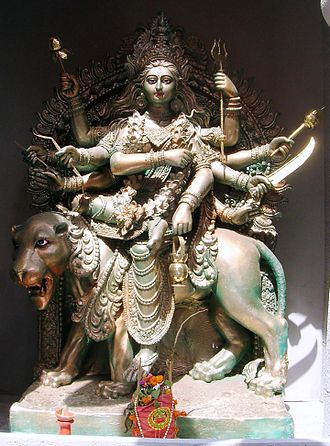
Thursday, October 15th
On the third day of Navaratri we celebrate Goddess as Chandraghanta, a powerful form of Durga. She wears a half-Moon (Chandra) in the shape of a bell (ghanta) oh her forehead. Riding a lion or a tiger, she has 10 arms in which she holds many weapons, as well as a japa mala, a lotus, a kamandal, and mudras (hand-positions) offering blessings and protection. Posed as a warrioress, she is ready to destroy the obstacles and enemies of her devotees. She rules the planet Venus (Shukra), and is truly a gentle goddess. Chandraghanta is full of love and compassion, and wants to bestow happiness and prosperity on those who worship her. This form of the Divine Mother brings us courage as well as grace and beauty. Worshipping her helps to remove suffering and to grant us serenity.
Fourth Day of Navaratri: Goddess as Kushmanda
Friday, October 16th
 On the fourth day of Navaratri we celebrate Goddess as Kushmanda, the power of Shakti that created the universe. It is said that when there was only darkness, Kushmanda smiled and the universe was illuminated. She is known as Adi Shakti, the first Shakti, creatrix of everything. She resides in the center of the Sun (Surya), and creates his bright light from her “cosmic egg.” She is radiant and glowing, and spreads warmth as well as vitality to her devotees. Kushmanda rides a lion or tiger and has 8 arms, holding many weapons, as well as a lotus, a japa mala, and a pot of honey or divine nectar.
On the fourth day of Navaratri we celebrate Goddess as Kushmanda, the power of Shakti that created the universe. It is said that when there was only darkness, Kushmanda smiled and the universe was illuminated. She is known as Adi Shakti, the first Shakti, creatrix of everything. She resides in the center of the Sun (Surya), and creates his bright light from her “cosmic egg.” She is radiant and glowing, and spreads warmth as well as vitality to her devotees. Kushmanda rides a lion or tiger and has 8 arms, holding many weapons, as well as a lotus, a japa mala, and a pot of honey or divine nectar.
Worshipping Kushmanda helps us to feel the spark of divine existence that radiates from the Sun to and through us all. She helps us to attain strength, good health, happiness and spiritual illumination. She is said to bestow siddhis (special powers) and thus can assist us in achieving success in many areas of life, including wealth, material comfort, and relationships. The power of the Sun enhances our positive and sattvic qualities through our worship of Kushmanda. She relates to the ahahata (heart chakra), and as such we should remember to approach her and make offerings from the purity of our hearts.
In some areas where Navaratri is dedicated to Durga, Lakshmi, and Sarasvati for three nights each, today begins the worship of MahaLakshmi. After calling upon the energy of Durga for three days to destroy our demons (shortcomings, false beliefs, and external obstacles), we now invoke Lakshmi, the Goddess of prosperity. She helps us to attain both material and spiritual wealth, including virtues such as devotion and compassion. Through worshipping Lakshmi and seeking her benevolence, we call forth the benevolence from within ourselves which will bring joy and happiness as we share it with others. Similarly, the warmth and energy of Kushmanda and the Sun is meant to be shared with others from the heart, which will help us to find ourselves in a kingdom of love and light.
Fifth Day of Navaratri: Goddess as Skandamata
Saturday, October 17th
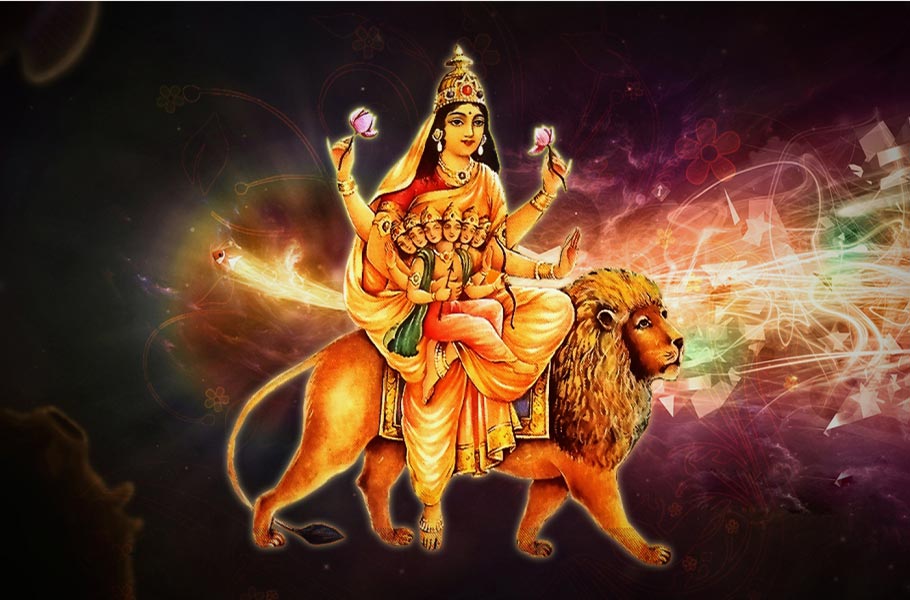 On the fifth day of Navaratri we celebrate Goddess in the form of Skandamata (literally the “mother of Skanda”). Skanda is a name for Kartikeya (also known as Murugun and Subramanya), the brother of Ganesha (both sons of Shiva and Parvati). We see Skandamata depicted holding her young six-headed son, as well as holding lotus flowers and keeping one hand in a blessing mudra. In worshiping her we call forth the protection and care that the Divine Mother has for all of creation, as all are her children. She blesses us with bliss, happiness, and motherly love, as well as nourishment and good health.
On the fifth day of Navaratri we celebrate Goddess in the form of Skandamata (literally the “mother of Skanda”). Skanda is a name for Kartikeya (also known as Murugun and Subramanya), the brother of Ganesha (both sons of Shiva and Parvati). We see Skandamata depicted holding her young six-headed son, as well as holding lotus flowers and keeping one hand in a blessing mudra. In worshiping her we call forth the protection and care that the Divine Mother has for all of creation, as all are her children. She blesses us with bliss, happiness, and motherly love, as well as nourishment and good health.
Kartikeya is the Lord of War, the leader of the army of devas (Gods) who fight the asuras (demons) in Hindu mythology. In the stories, the demon Tarakasura was tormenting all of humanity, and it was destined that only Lord Shiva’s son would be able to kill him and save the world. Shiva had renounced everything and was lost in meditation, however, after the death of his first wife, Sati. The Gods devised a plan and ensured that Parvati was born (a reincarnation of Sati), and followed a path that would result in Shiva’s emerging from meditation and remarrying. When they finally married, Shiva and Parvati ended up making love for millions of years while the world awaited their savior. Eventually, the fire deity, Agni, snuck into their cave in order to steal the seed that was needed. It was so hot that he could not hold it, however, and dropped it in the river Ganga (another manifestation of Goddess), who deposited the infant Skanda on her banks where he was found and nourished by six women (thus the six heads).
The demons represent the ignorance which gives rise to all human impurities and misfortune. In worshiping Skandamata we also worship Skanda and receive his blessings, including protection from harm and victory over our enemies, both internal and external. Skandamata relates to the vishuddhi (throat chakra), meaning “pure” or “undiluted,” showing that we can attain purity and realize infinite blessings through her worship. She is rules the planet Mercury (Budha), the planet and deity of communication and the intellect.
Sixth Day of Navaratri: Goddess as Katyayani
Sunday, October 18th
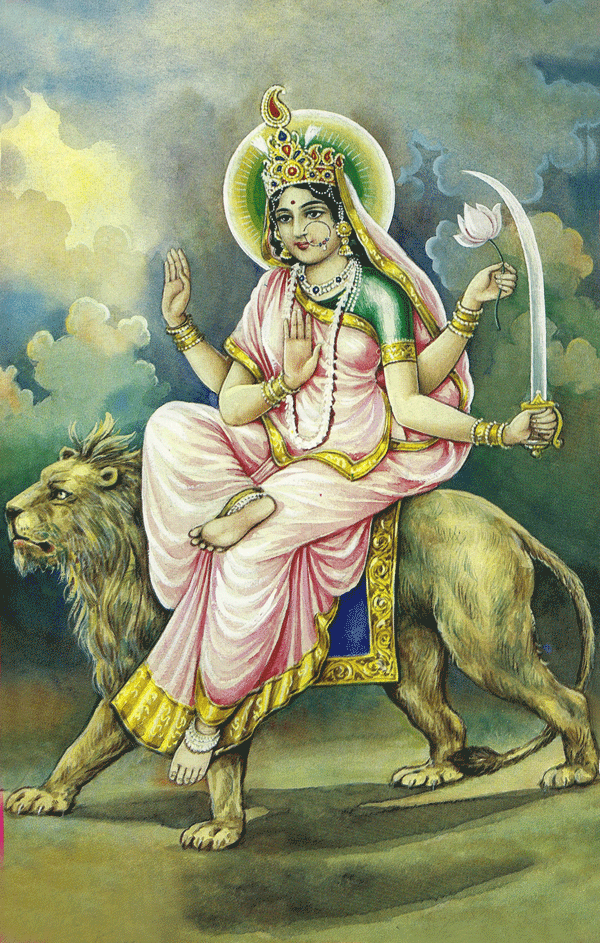 On the sixth day of Navaratri we celebrate Goddess in the form of Katyayani, the warrioress who destroyed Mahishasura (the buffalo demon). Mahishasura had been granted a boon (unbreakable wish) from Lord Brahma that determined that no man could kill him. Thus, when he was terrorizing the earth and heavens, the Gods summoned Goddess Durga to come and save them. This form of Durga is named Katyayani, for her father Katya, a devoted sage who did rigorous penance in order to have Durga take birth as his daughter. Katyayani takes a fierce form of the Divine Mother when we call upon her to destroy our demons, including both internal negativities and external obstacles to material and spiritual success. She relates to the ajna (the third-eye) chakra, where we draw our concentration during worship today.
On the sixth day of Navaratri we celebrate Goddess in the form of Katyayani, the warrioress who destroyed Mahishasura (the buffalo demon). Mahishasura had been granted a boon (unbreakable wish) from Lord Brahma that determined that no man could kill him. Thus, when he was terrorizing the earth and heavens, the Gods summoned Goddess Durga to come and save them. This form of Durga is named Katyayani, for her father Katya, a devoted sage who did rigorous penance in order to have Durga take birth as his daughter. Katyayani takes a fierce form of the Divine Mother when we call upon her to destroy our demons, including both internal negativities and external obstacles to material and spiritual success. She relates to the ajna (the third-eye) chakra, where we draw our concentration during worship today.
Katyayani relates to fervent devotion, and it is told that she was also worshipped by the Gopis of Vrindavan, who called on her to help them win Lord Krishna as their husband. It is said that worshiping Katyayani will help in bringing a good relationship and marriage, as she bestows the strength to remove obstacles. She also rules Jupiter (Guru), who represents husband in a woman’s astrological chart. Jupiter brings grace, expansion, and optimism, just as Katyayani helps us to fight sorrow and fear. Katyayani is related to fragrances, and offering her incense and other aromatics is a good practice to include in worship today. Through healing scents she helps us to fight disease and improve health. She holds both a lotus and a sword in two of her hands, and holds the other two in mudras offering protection and blessings.
Seventh Day of Navaratri: Goddess as Kalaratri
Monday, October 19th
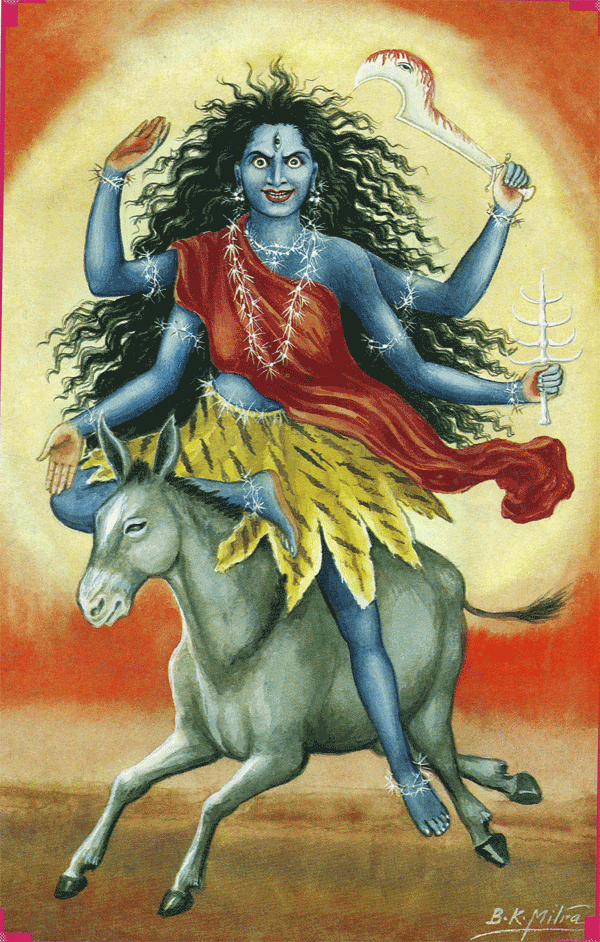 On the seventh day of Navaratri we worship Goddess as Kalaratri, a dark and fierce form of Durga. She has wild black hair, dark complexion, three red eyes, and flaming nostrils. She rides a donkey, and carries a sword and a cleaver in two hands, while her two other hands are in mudras offering blessings and protection. “Kala” refers to time, darkness, and therefore death. “Ratri” is night, and the presence of this goddess signifies a night of facing death and darkness. She reminds us that these are parts of the experience of life. By facing these aspects, and by worshipping Kalaratri, we can be freed from the pain and suffering associated with them. She is by our side bravely and compassionately as we face the morbid and terrifying aspects of existence, and helps to destroy our fears and weaknesses, giving us great strength.
On the seventh day of Navaratri we worship Goddess as Kalaratri, a dark and fierce form of Durga. She has wild black hair, dark complexion, three red eyes, and flaming nostrils. She rides a donkey, and carries a sword and a cleaver in two hands, while her two other hands are in mudras offering blessings and protection. “Kala” refers to time, darkness, and therefore death. “Ratri” is night, and the presence of this goddess signifies a night of facing death and darkness. She reminds us that these are parts of the experience of life. By facing these aspects, and by worshipping Kalaratri, we can be freed from the pain and suffering associated with them. She is by our side bravely and compassionately as we face the morbid and terrifying aspects of existence, and helps to destroy our fears and weaknesses, giving us great strength.
She is an expression of Kali, whose fearful form was birthed from Durga’s third eye when Durga needed more strength and ferocity to fight the demon Raktabija. She is also called Shubhankari, she who does auspicious deeds, and reminds us that we have nothing to fear from her, and nothing to fear, ever. The compassionate energy of the Divine Mother is always working through all parts of creation, even in the processes of destruction. Kalaratri rules Saturn (Shani), who also represents time and ultimate death, and offers us the opportunity for expanded consciousness through meditation on these inevitabilities. By worshiping Kalaratri on the seventh day of Navaratri and meditating on her deeply, we connect with the sahasrara (crown) chakra, and the barriers between mind, body, and spirit begin to dissolve. She blesses us with happiness and courage, helping to remove sadness, pain, and fear.
In some areas, the seventh day of Navaratri begins the worship of Sarasvati. Having worshipped Durga and Lakshmi for three days and nights each, to remove obscacles and obtain spiritual wealth. Now the devotee is ready to receive knowledge, which comes from Sarasvati, the goddess of learning. In other schools of worship, such as Kalikula in Nepal, Sarasvati is celebrated for the first three nights, followed by Lakshmi, and the last three nights are dedicated to Kali.
Eighth Day of Navaratri: Goddess as Mahagauri
Tuesday, October 20th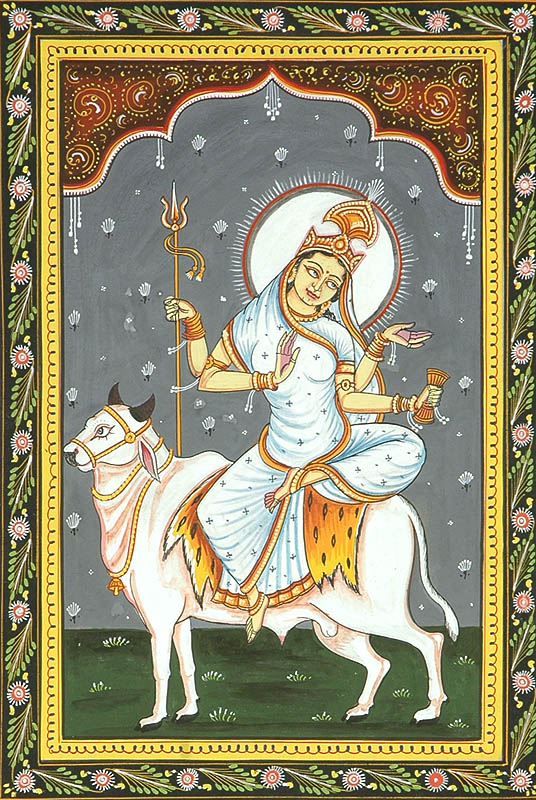
On the eighth day of Navaratri we worship Goddess as Mahagauri, the “great white goddess.” This incarnation of Durga is fair, shining and radiant like pure light, representing her purifying shakti. She rides a bull and carries a damaru (a hand-drum) and a trisul in two hands, keeping the other two in mudras for blessing and protecting. She represents compassion, truth, and purity and bestows these on her devotees. Mahagauri is often thought of as the young form of Parvati, and thus worshipers often feed young girls sweets on this day of celebration, to honor the great white goddess.
The story is often told that while Parvati was doing penance to win Lord Shiva, her body became black and dirty. When Shiva accepted her he washed her with the water of the Ganga which made her shine resplendently and become Mahagauri. This represents her power to free us from all pain and suffering and to bless us with auspiciousness and virtues, those who bathe in the waters of the holy river Ganga are said to be blessed and purified. This includes freeing us from the painful attachments to the material world. As we worship Mahagauri only after the night of worship dedicated to Kalaratri, we can see that this detachment and reemergence into the light can come only after facing death and darkness. This goddess relates to the planetary deity Rahu (the north node of the Moon), who is actually a shadow point in the cosmos and has no physical body. Thus Mahagauri relates to parts of our soul and psyche that are beyond the physical body or chakra system. By making offerings to and meditating upon her, we can begin to go beyond our attachments to the mundane details of life and purify our connection with spirit.
Ninth Day of Navaratri: Goddess as Siddhidatri
Wednesday, October 21st
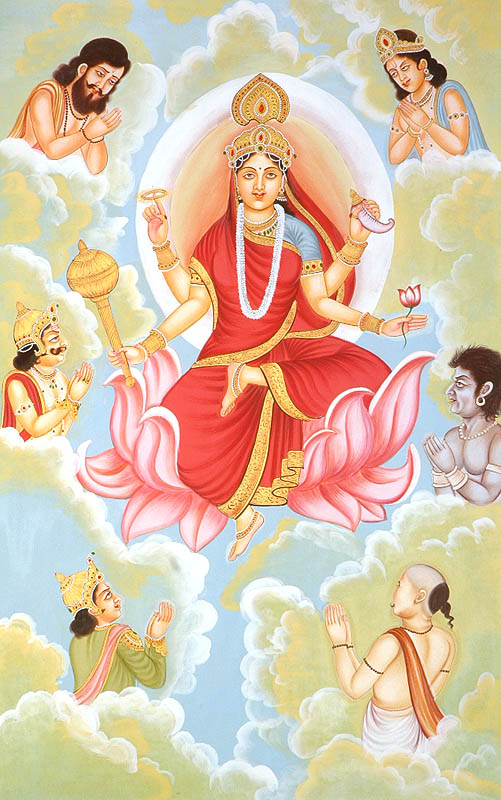 The ninth day of Navaratri is of utmost importance. On this day we worship Goddess as Siddhidatri, the giver of all siddhis, special powers or perfect attainments. Siddhis are magical, spiritual, or psychic powers, attained through dedication and devoted practice. Through worship and meditation upon all the forms of Durga, culminating with that of Siddhidatri, we can attain perfection and infinite blessings from her. Through the siddhis, all desires can be fulfilled. But it is said the greatest blessing one can receive is to transcend all desires, or to have one’s only desire be to know Goddess/God. With the blessing of devotion, through her grace, we can remain peaceful and happy in all circumstances, blissfully experiencing the Divine Mother’s presence in and throughout all of creation, in every moment.
The ninth day of Navaratri is of utmost importance. On this day we worship Goddess as Siddhidatri, the giver of all siddhis, special powers or perfect attainments. Siddhis are magical, spiritual, or psychic powers, attained through dedication and devoted practice. Through worship and meditation upon all the forms of Durga, culminating with that of Siddhidatri, we can attain perfection and infinite blessings from her. Through the siddhis, all desires can be fulfilled. But it is said the greatest blessing one can receive is to transcend all desires, or to have one’s only desire be to know Goddess/God. With the blessing of devotion, through her grace, we can remain peaceful and happy in all circumstances, blissfully experiencing the Divine Mother’s presence in and throughout all of creation, in every moment.
In her depiction, Siddhidatri sits on a lotus or a lion and holds a discus, a lotus, a mace, and conch shell, which she will use to sound the victory we attain through her worship. She is surrounded by and worshipped by all forms of divine beings–Gods, demons, spiritual masters and nature-spirits. It is said that even Lord Shiva received his powers from Siddhidatri. In the divine form that is half Shiva and half Shakti, he is merged with Siddhidatri and known as Ardhanarishvara. Siddhidatri relates to Ketu (the south node of the Moon), and thus she governs our deep and ancient psychic wisdom. She is a powerful goddess to worship for enhancing spiritual, psychic and energetic healing powers.
The Tenth Day of Navaratri: Vijayadashami
Thursday, October 22nd
The tenth day of Navaratri is known as Vijayadashami, the day of victory. After calling upon the Divine Mother’s presence and qualities to arise from within us for nine days and nights, we emerge victorious, basking in Her light and virtues. This is an auspicious time for beginning new ventures, especially creative and spiritual pursuits.
Jai Ma Durga!
I offer personal Vedic Astrology readings which can provide insight into the aspects of Shakti as well as the planetary forces you can work with in order to understand and master your personal strengths, challenges, and life course better. Click Here to order a reading and sign up for free Vedic Astrology news!
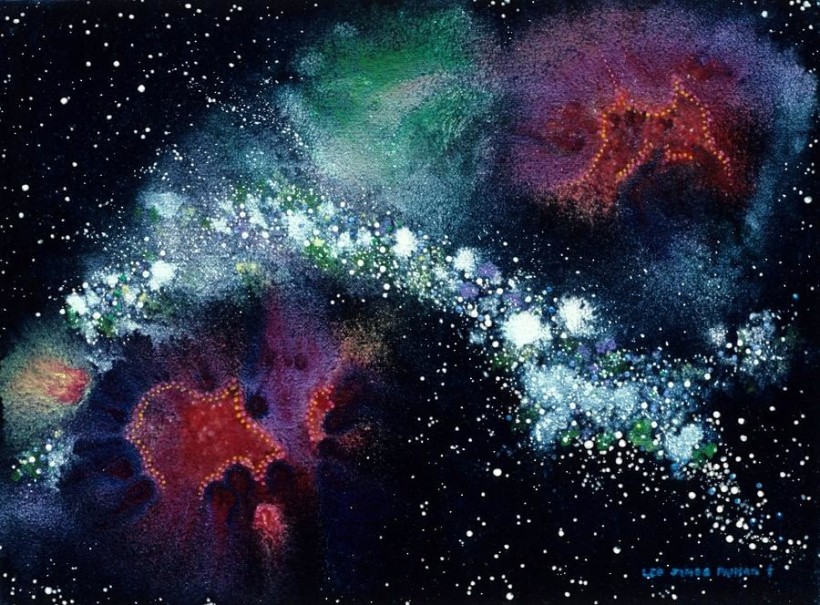
by Somya Devi | Jun 15, 2015 | Astrology, Planets Changing Signs
 The New Moon will occur Tuesday morning at 7:05am PDT, in early sidereal Gemini (Sun and Moon at 1 degree 3 minutes Gemini). This begins the Gemini Moon cycle for the next month. Mercury rules Gemini, so we will deal with the themes of the intellect a lot this cycle. We may see our thinking accelerate and new ideas synthesize, as well as a deeper exploration of communication. It’s a time to look out for vata, as the swiftness of Mercury and its air-sign Gemini can elevate that dosha in the mind and body. Staying hydrated and well oiled is important (internally and externally), as well as doing grounding practices that connect you to the earth. Applying oil to the bottoms of the feet will be very nourishing, or to the entire body before you shower.
The New Moon will occur Tuesday morning at 7:05am PDT, in early sidereal Gemini (Sun and Moon at 1 degree 3 minutes Gemini). This begins the Gemini Moon cycle for the next month. Mercury rules Gemini, so we will deal with the themes of the intellect a lot this cycle. We may see our thinking accelerate and new ideas synthesize, as well as a deeper exploration of communication. It’s a time to look out for vata, as the swiftness of Mercury and its air-sign Gemini can elevate that dosha in the mind and body. Staying hydrated and well oiled is important (internally and externally), as well as doing grounding practices that connect you to the earth. Applying oil to the bottoms of the feet will be very nourishing, or to the entire body before you shower.
It’s also a time to be aware of high pitta, the fire-dosha, as the Sun and Mars are also tightly conjunct right now. This is what we call a highly combust Mars, as it is only half a degree away from the Sun in early Gemini at the time of the New Moon. This can be incredibly aggravating, as these two fire planets joined increases the heat in our bodies and minds and can cause us to feel easily provoked and prone to anger and explosions. To alleviate pitta imbalances, we can avoid spicy foods during this time, and eat cooling ones such as cucumber, coconuts, and watermelon. Make sure to intake enough liquids and use coconut oil rather than more heating oils for internal and external use. Lavender, tulsi, and rose essential oils are all calming and cooling to the body-mind, and can be used for aromatherapy by placing a drop or two on the pillowcase at night or in a diffuser in your home or office. You can also make a tea from the dried petals and leaves of these aromatic plants.
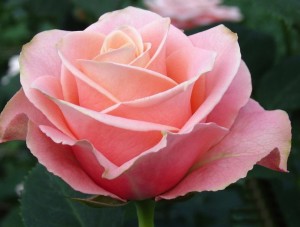
Rose is especially helpful in this time because of its ability to soothe and balance the heart and emotions, which could feel overwhelming right now. With New Moon so close to Sun and Mars, there is the potential for their fire to weigh on the heart in the form of passion or frustration/anger. At the same time we have Venus joined with Jupiter in Cancer, which expands Venus’s potential for love and happiness, and also raises the importance we place on it and makes us weigh it closely against our values. Jupiter is our potential for wisdom and higher thought or spiritual understanding. With these two in the feminine Moon-ruled sign of Cancer, we can really tap into some Divine Mother/heart-energy if we seek happiness and through spiritual practice. If we let Jupiter’s expansive quality push us to seek material pleasures too much, we will inevitably be disappointed as time goes on, as these are all temporary. Tulsi can help us to orient our love towards a place of devotion. Jupiter and Venus will be really close in the sky for most of the coming month (very tightly conjunct around June 30th), and incredibly beautiful to witness in the night sky. They will be close with the Moon in Cancer at the end of this week… a great time for open-hearted prayers.
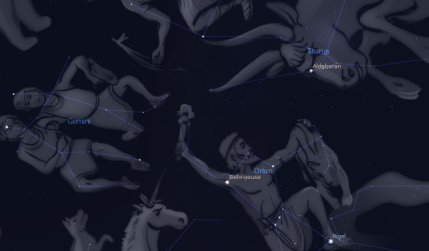 There is the potential to feel an urgent sense of seeking during this New Moon, which falls in the Vedic nakshatra Mrigashira, located around the star Bellatrix, (on the shoulder of Orion, in the region of the sky bridging Taurus and Gemini). Mrigashira is the star of the deer’s head, often referred to as “the wanderer,” continuously searching with curiosity. Though there is a beauty and innocence to this, the restlessness of
There is the potential to feel an urgent sense of seeking during this New Moon, which falls in the Vedic nakshatra Mrigashira, located around the star Bellatrix, (on the shoulder of Orion, in the region of the sky bridging Taurus and Gemini). Mrigashira is the star of the deer’s head, often referred to as “the wanderer,” continuously searching with curiosity. Though there is a beauty and innocence to this, the restlessness of 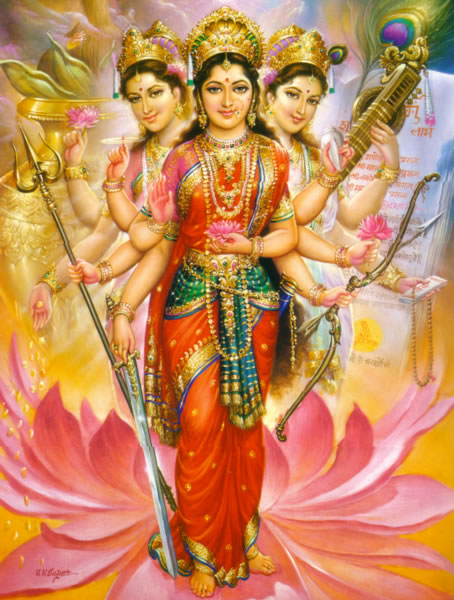 this star can also interfere with our ability to stay focused and one-pointed. Its deity is Soma, a name for the Moon, and the Moon as it relates to our emotional mind can be easily changeable. Mrigashira also represents many positive qualities of the Moon, which is beautiful, gentle, calming, and full of compassion and Divine Mother energy. This star is also associated with Parvati, the wife of Shiva in Hindu mythology and a powerful representation of the goddess. This is a great time to get in tune with all aspects of the goddess, from the most gentle, motherly form, to the strong-willed warrior aspects of Durga and the fierce and compassionate nature of Kali (both forms of Parvati).
this star can also interfere with our ability to stay focused and one-pointed. Its deity is Soma, a name for the Moon, and the Moon as it relates to our emotional mind can be easily changeable. Mrigashira also represents many positive qualities of the Moon, which is beautiful, gentle, calming, and full of compassion and Divine Mother energy. This star is also associated with Parvati, the wife of Shiva in Hindu mythology and a powerful representation of the goddess. This is a great time to get in tune with all aspects of the goddess, from the most gentle, motherly form, to the strong-willed warrior aspects of Durga and the fierce and compassionate nature of Kali (both forms of Parvati).
In Vedic thought Soma also refers to the nectar released through meditation. In this we can again see this New Moon as a call to stay hydrated in order to nourish the water element in our bodies, which is the conduit for the flow of all nutrients, including the physical and the spiritual. We can follow the searching nature of this star and the present alignments on a path to find new experiences, relationships, or temporary pleasures, or on a search for higher knowledge, wisdom, and heart-opening. Call forth the gentle energy of Mrigashira to appease the heat of combust Mars. Stay cool as much as possible and nourish the heart during this month of powerful celestial combinations.
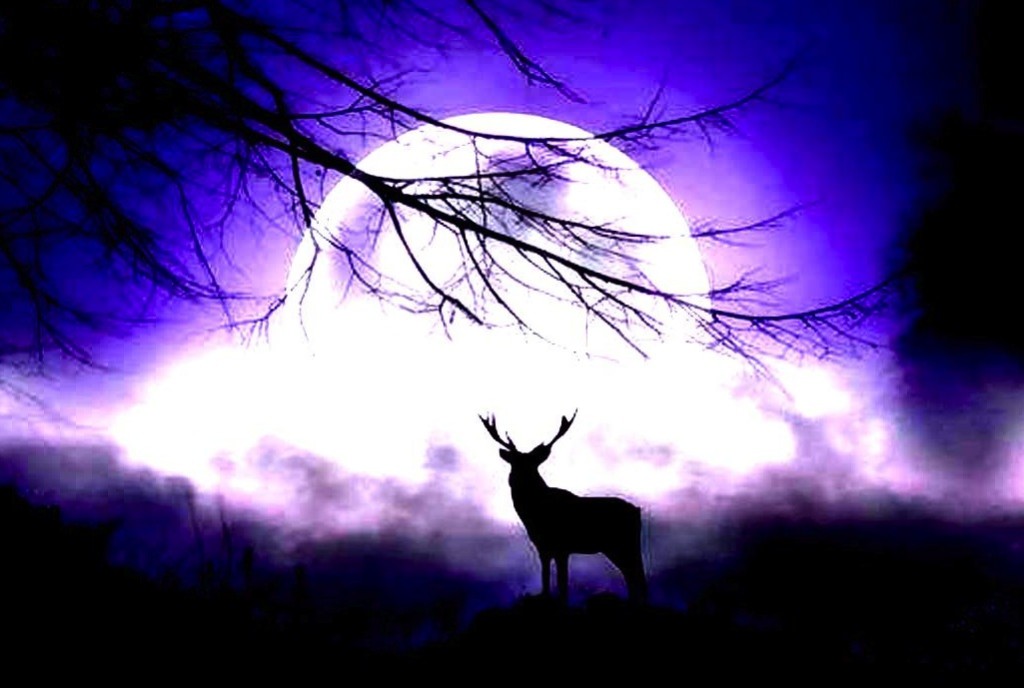
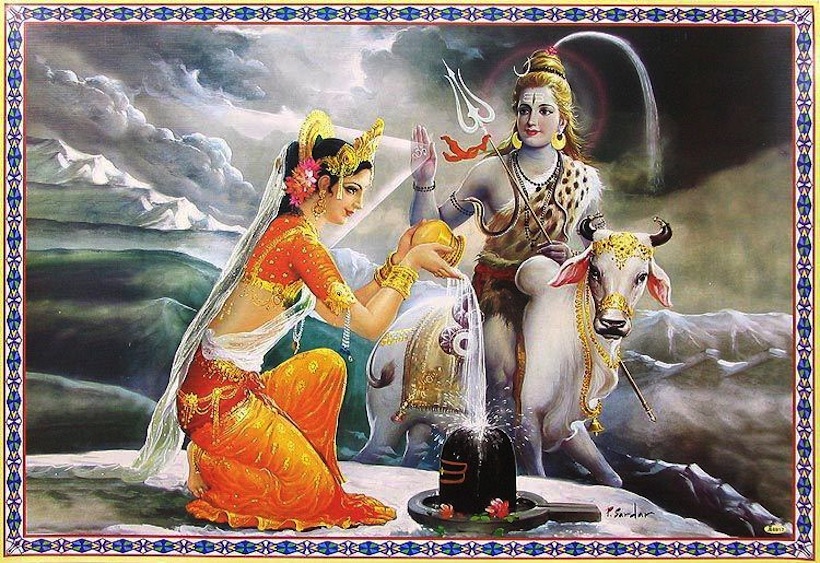
by Somya Devi | Feb 16, 2015 | Astrology, Holy Days
Tonight is Maha Shivaratri, or the Great Night of Shiva. It is the celebration of the day of Lord Shiva and Parvati’s wedding, representing the unification of Shiva and Shakti, or the masculine and feminine forces of divine consciousness and energy. We celebrate each Shivaratri on the fourteenth night of the waning moon, while Maha Shivaratri falls on this night during the lunar month Magha.
This moon phase begins during the night on Monday, February 16th, 2015 in North America and continues through until the evening of the 17th (when the New Moon phase begins). In Hindu tradition, this night is highly auspicious for performing spiritual practices and penance in order to accrue grace and swifter spiritual gain. It is said that a boon (wish) from Lord Shiva may be granted to one who undergoes penance with devotion.
 Fasting and staying up all night are typical practices, along with yoga, chanting, meditation, and prayer. The panchakshara or five-syllabled mantra, “Om Namah Shivaya,” is particularly auspicious to chant on this day. It beckons forth divine love and the emergence of our higher self. In the Hindu trinity, Shiva is the destructive or transformative aspect of the divine, aiding in the destruction of our ego and the accompanying hindrances that do not serve us. This allows a rebirth into higher consciousness.
Fasting and staying up all night are typical practices, along with yoga, chanting, meditation, and prayer. The panchakshara or five-syllabled mantra, “Om Namah Shivaya,” is particularly auspicious to chant on this day. It beckons forth divine love and the emergence of our higher self. In the Hindu trinity, Shiva is the destructive or transformative aspect of the divine, aiding in the destruction of our ego and the accompanying hindrances that do not serve us. This allows a rebirth into higher consciousness.
Shiva is known as the greatest of yogis, who sits on a mountain top in meditation with equanimity for all creation, for aeons without disturbance. In the stories, he had retreated to Mount Kailash and renounced the world after the death of his first wife, Sati. The other gods eventually required Shiva to leave his meditation, however, in order to marry again and produce a son that could destroy a powerful demon who was terrorizing the three worlds.
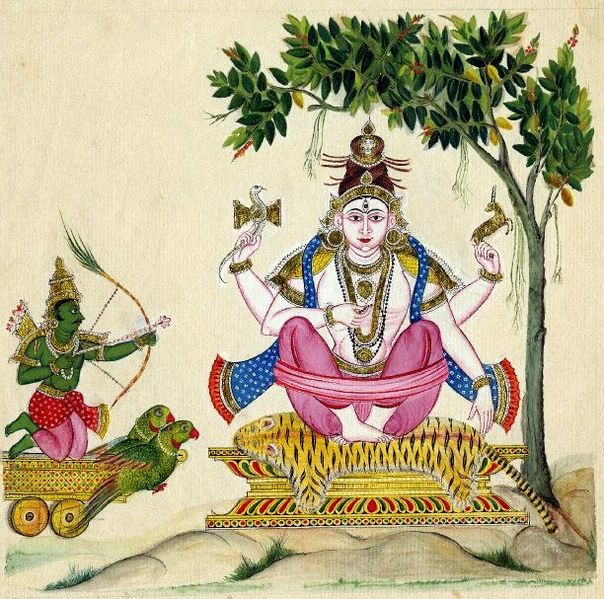 Parvati was born for this purpose (a reincarnation of Sati), and was naturally attracted to the meditative Shiva. She went to serve him while he was in his deep meditation, and grew to love him, even though her less devoted friends were turned off by his rough appearance. For a long time he seemed not to notice her, and thus Kamadeva, the God of Love, was sent to fire a love arrow at Shiva. Though this startled him and awakened him from his trance, he soon realized the scheme, destroyed Kamadeva and sent Parvati away. Her love for him did not diminish, however, and she prayed for a path that would lead him to accept her.
Parvati was born for this purpose (a reincarnation of Sati), and was naturally attracted to the meditative Shiva. She went to serve him while he was in his deep meditation, and grew to love him, even though her less devoted friends were turned off by his rough appearance. For a long time he seemed not to notice her, and thus Kamadeva, the God of Love, was sent to fire a love arrow at Shiva. Though this startled him and awakened him from his trance, he soon realized the scheme, destroyed Kamadeva and sent Parvati away. Her love for him did not diminish, however, and she prayed for a path that would lead him to accept her.
The sage Narada, who was in on the gods’ plan, told Parvati that Shiva could not be won by charm and beauty, but only by spiritual practice and austerity. Propelled by her love for Shiva, Parvati took up the life of an ascetic and left her father’s palace to live in the dirt on the forest floor, forgoing food, water, and luxuries while meditating on her lord. The force of love in her heart compelled a devotion that allowed her to burn away all fears and impurities through her meditation, and she became one of the most powerful yoginis.
Finally, having compassion for her and the three worlds (who were awaiting his heir to prevent their destruction), Shiva went to see Parvati in disguise in order to test her devotion. He asked her why she was performing such penance, and she replied that it was all for the deep love of her lord. He questioned why she would want to marry someone like Shiva who was crude and without riches, who carried skulls and associated with a wild crowd. She allowed the passion of her heart to rise and defended her lord, telling the man that Shiva was the greatest god and yogi and that only someone with a lower mind would not understand him.
 For the strength of her devotion, Shiva granted Parvati a boon and finally accepted her as his wife, and the worlds rejoiced. The complementary forces of Shiva and Shakti, masculine and feminine, divine father and mother, were finally able to unite and propel the dance of creation needed for all to be in balance. This is why on Maha Shivaratri, we celebrate and call upon the merging of these two halves, consciousness and energy, through penance and austerity. It is a great time to fast and refrain from indulging any of the five senses.
For the strength of her devotion, Shiva granted Parvati a boon and finally accepted her as his wife, and the worlds rejoiced. The complementary forces of Shiva and Shakti, masculine and feminine, divine father and mother, were finally able to unite and propel the dance of creation needed for all to be in balance. This is why on Maha Shivaratri, we celebrate and call upon the merging of these two halves, consciousness and energy, through penance and austerity. It is a great time to fast and refrain from indulging any of the five senses.
On this Shivaratri, Venus and Mars are tightly conjunct and joining Ketu in Pisces. Though Venus is exalted in Pisces and this could raise passion levels, it could also create confusion or a disturbance in relationships, and stir up overwhelming emotions including fear and feelings of isolation. Ketu’s influence brings a critical eye, and Venus and Mars are receiving an aspect from Pisces’ ruler, retrograde Jupiter, so this placement could cause us to temporarily retreat from Mars-Venus interactions. Moon and Mercury are also tightly conjunct, with a close aspect from Saturn and a wider aspect from retrograde Jupiter. This could bring an analytical influence to our emotional body and processing, but also a strong feeling of pressure (Saturn), and an evolving philosophy in regards to our emotions today.
Tomorrow, Tuesday, February 17th, begins the new moon phase (Amavasya), with the moment of new moon at 3:47pm Pacific time on Wednesday, the 18th. This new moon will occur with Sun and Moon in sidereal Aquarius in the nakshatra Dhanishta. Aquarius is a fixed air sign ruled by Saturn, so this cycle may bring some big ideas to the forefront that we hope to implement through action, perhaps continuing the Capricorn-cycle-driven urge to add structure to our lives. Aquarius is a place where the individual is less emphasized (opposite Leo, where the full moon will happen), so these ideas will apply more to our society and community, and acts of service are likely. Saturn brings the opportunity for discipline, so it could be a great time to add more to your spiritual practice, including some breath-work or pranayama.
Dhanishta, ruled by Mars, is the star of wealth. Its deities are the eight Vasus, which refer to the elements making up the earth and cosmos, and it is related to music and arts. We may be working on ideas to help increase wealth this moon cycle, especially creative endeavors that benefit the many. Though we may feel the disciplining and discerning force of Saturn, Mars and Venus will be joined in Pisces for a few weeks, which could cause some of our energy to get lost or diverted to the dream realm. Venus is exalted in Pisces, which can cause us to overemphasize our desires and fantasies, especially with the aspect from its retrograde ruler, Jupiter. With the critical influence of Ketu, be gentle with your relationships and partners. We may, however, get the chance to bring some of that dream-realm material into our artistic and community service endeavors with consciously-applied action and discipline.
Happy Maha Shivaratri, Hara Hara Mahadev!
#jyotish #astrology #Shivaratri #Sivaratri #horoscope #forecast #veda #vedicastrology #Ayurveda #newmoon #shiva #siva #parvati






















